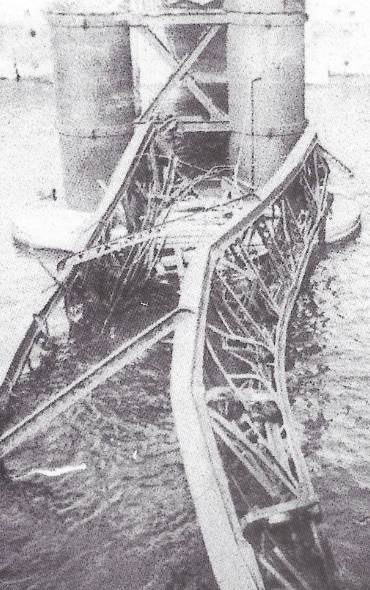One of Valletta’s most Instagrammable spots is actually just outside the city. Perched at the entrance of the Grand Harbour, the St Elmo bridge has enjoyed multiple cameos in photographs by those eager for an alternative holiday snap. But what most tourists – and locals – don’t know is that the red bridge we have now is not the original one.
Original design
Talks to build a footbridge connecting St Elmo to the breakwater were recorded as early as the 18th century, but plans started being implemented at the turn of the 20th century. Then a British colony, the bridge’s first stone was laid by King Edward VII himself in 1903, with works commencing two years later. Finished in 1910, the bridge came at a considerable financial cost.
World War II

wikipedia.org
Barely a year after its 30th birthday, the St Elmo bridge went from proud structure to war casualty. One of two Axis targets, the Italian forces tried using the veil of night to carry out their ambitious mission, but their original tactic did not go as planned.
The attack started at 4.46am on 26th July with one of two human torpedos aimed to destroy the net around the Grand Harbour and thus allowing entry to a sizeable Italian fleet. However, it failed to detonate, and seeing this the other manned torpedo, captained by Teseo Tesei (also the inventor of said torpedos) aimed his craft at the bridge in the hopes that it would do the job. The plan was to steer it in the direction and then run away before it detonated, but both men on board were killed with the blast.
Their deaths were futile though, as the bridge collapsed in a way that prevented access to the Grand Harbour, and their mission failed. The British, who had been aware of their movements, had opted to wait until the enemy troops were in clear sight before initiating a counter-attack.
Reconstruction
Although the collapsed beams were removed straight after, the bridge was eventually demolished after the war. Talks to construct a replica were initiated half a century later, with the current bridge being installed on 5th October 2011 and subsequently inaugurated on 24th July of the following year. Should there be no other torpedo attack in the future, the bridge is expected to last well into the second century of the millennium.
And that's your daily dishing of history right there!